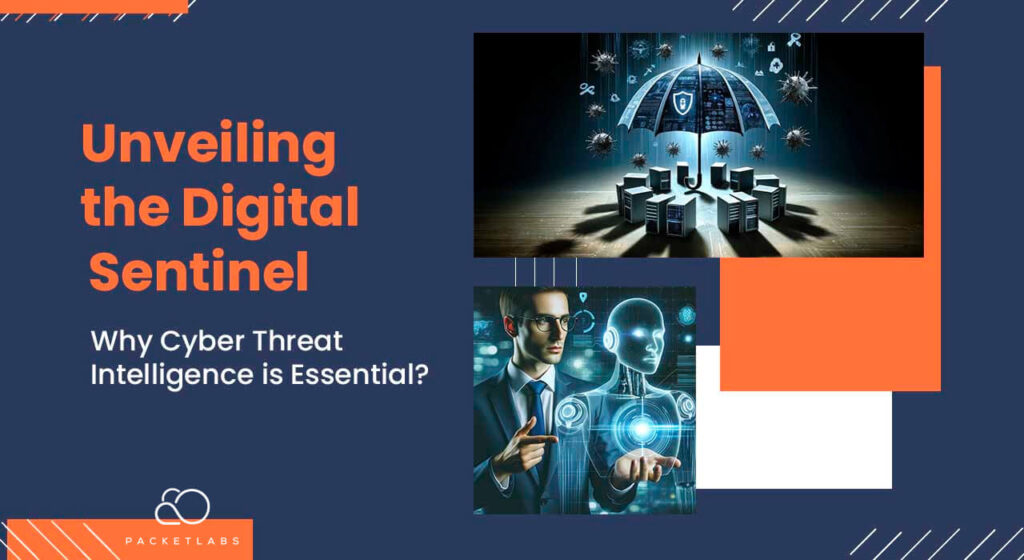
In the ever-shifting digital landscape, cyber threats lurk like unseen predators. These threats, constantly evolving in form and sophistication, can cripple businesses, compromise personal information, and disrupt critical infrastructure. To combat this relentless assault, organizations must equip themselves with a powerful weapon: cyber threat intelligence (CTI).
CTI acts as a digital sentinel, empowering organizations to proactively identify, analyze, and neutralize cyber threats. By understanding the ever-changing threat landscape, organizations can take a preventative stance, significantly reducing the risk of falling victim to a cyberattack.
Navigating the Murky Waters of Cyber Threats
The digital age has fostered a complex and dynamic threat environment. Cybercriminals, state-sponsored actors, and hacktivists employ a vast arsenal of tactics, from malware masquerading as legitimate software to phishing emails designed to steal sensitive data. Ransomware attacks, where attackers hold data hostage until a ransom is paid, have become a growing concern, crippling businesses and disrupting essential services.
Understanding the dynamic nature of cyber threats is of utmost importance. Through CTI, organizations can gain valuable insights into past and present threats, allowing them to anticipate potential risks and vulnerabilities. This proactive approach empowers organizations to fortify their defenses before attackers can exploit weaknesses.
Early Warning System: Stopping Threats Before They Strike
One of the most valuable aspects of CTI is its ability to function as an early warning system. By continuously monitoring vast troves of data from diverse sources, CTI platforms can detect emerging threats and indicators of compromise (IOCs) before they materialize into devastating breaches. These early warnings allow organizations to implement proactive defense measures, such as patching vulnerabilities and implementing stricter access controls, significantly reducing the risk of a successful attack.
Sharpening the Response: Effective Mitigation and Recovery
When a security incident does occur, CTI plays a crucial role in effective response and mitigation. Timely and actionable intelligence provides valuable insights into the attackers’ identities, their tactics, and the specific indicators associated with the attack. Armed with this knowledge, organizations can respond swiftly and decisively, containing the incident, minimizing damage, and restoring normal operations as quickly as possible.
While Cyber Threat Intelligence provides invaluable insights into potential attacks, fortifying your organization’s security posture also requires robust access control measures. Identity and Access Management (IAM) plays a vital role in this regard. Learn how IAM empowers organizations to safeguard sensitive information and bolster their overall data security posture: Aussie Data, Aussie Rules: “How IAM Protects Your Sensitive Information Under Australian Law“
Intelligent Vulnerability Management
Effective vulnerability management is a cornerstone of robust cybersecurity. CTI empowers organizations to strengthen their vulnerability management programs by providing insights into the vulnerabilities most likely to be exploited by attackers. By analyzing threat intelligence data, organizations can prioritize vulnerabilities based on their potential impact and exploitability. This allows for a more efficient allocation of resources and a significant reduction in the attack surface.
Informed Decisions: Risk Management in the Digital Age
CTI is a vital tool for informed risk management and strategic decision-making. By understanding the specific threats targeting their industry, organizations can make proactive decisions regarding resource allocation, security strategy development, and regulatory compliance. Intelligence-driven risk management empowers organizations to stay ahead of potential threats, minimize vulnerabilities, and effectively protect their critical assets.
Collective Defense: A United Front Against Cybercrime
The fight against cybercrime transcends organizational boundaries. Effective defense necessitates collaboration and collective action. CTI facilitates information sharing and collaboration among organizations, industries, and even nations. Sharing intelligence on emerging threats, attack patterns, and IOCs allows organizations to collectively respond to and mitigate cyberattacks more effectively. Public-private partnerships, information sharing platforms, and industry collaborations play a vital role in fostering a united front against cyber threats.
The Indispensable Sentinel
In the ongoing battle against cyber threats, CTI is an indispensable tool. By harnessing the power of intelligence-driven security, organizations can stay ahead of adversaries, protect their digital assets, and contribute to a safer and more resilient digital world. The ability to anticipate threats, detect and prevent attacks, enhance incident response, strengthen vulnerability management, inform risk management, and foster collaboration is paramount in the fight for a secure digital future. Embracing CTI is not merely a best practice; it is a necessity in our interconnected world.

